► Your Volkswagen ID sub-brand briefing
► Full range of EVs both present and future
► Plus, the tech and the factory behind VW ID
Volkswagen has further accelerated its plans to electrify and offer fully-electric models – with a roadmap that spells out exactly what is to come by 2030. More ID models have been given production dates, there is confirmation of a GTX electric performance-car variant for some models and the first details of Project Trinity – the brand's basis of a new EV platform.
Here are some handy links to navigate this article:
Early signs are promising. Volkswagen's push for electric mobility would certainly appear to have been successful during 2020, with the brand delivering almost three times as many pure-electric vehicles as it did the year before.

VW delivered nearly 134,000 electric vehicles, and 212,000 electrified cars in total (including hybrids and plug-in hybrids). That's an increase of 197% and 158% respectively.
VW's chief operating officer Ralf Brandstätter said: '2020 was a turning point for Volkswagen and marked a breakthrough in electric mobility.
'We are well on track to achieve our aim of becoming the market leader in battery electric vehicles.'
The ID range: Volkswagen's EVs explained
The electric ID brand is as significant to Volkswagen as the Beetle was in 1945 and the original Golf in 1974. In their different ways, they transformed the company. Can ID do the same at a time when VW is still being buffeted by the aftershocks of Dieselgate?
Each of the ID models, which will range from A-segment through to a saloon, SUV and a seven-seater, will have 'the interior space of the class above’, explained Andreas Köhler of the MEB’s electronic project management team.
With an anticipated 10 million vehicle sales across all VW Group brands during the first wave of electrification (and up to 22m by the end of the 2020s), there’s been considerable focus on component sharing and cost cutting. The use of an all-steel platform will help; it’s far cheaper than a lightweight aluminium alternative.
But the big cost challenge will be in the less familiar area of battery costs. As VW makes the transition from internal combustion to electrification, it needs to not only master the use of batteries but secure a reliable, cost-effective supply of the raw materials, while being on the lookout for technical advances.
VW is building a small electric city car. CAR first predicted the model in the summer of 2020, with the brand officially confirming the new model at its annual conference in March 2021. It's slated to go into production in 2025 to replace the Up, with an entry price of around £17,000.

The new VW ID.3 electric car is the first of the new generation of Volkswagen EVs in series production, and the first of the brand’s new ID series. What does ID stand for? Ignore dieselgate? Not quite; instead we're told it stands for 'intelligent design, identity and visionary technologies.'
It doesn’t really matter either way, but what is important is just how big VW thinks the ID brand will be; it’s calling the ID.3 the third major chapter after the Beetle and the Golf. That's a big claim.
The ID.3 will have a CO2 balance of zero. ‘We have investigated the supply chain. Our suppliers use green energy. Our Zwickau factory has already changed to green energy. Elsewhere we will use a compensation scheme [ie carbon trading],’says VW electrification chief Thomas Ulbrich. But other aspects of the grand plan were still, he said, works in progress, for example whether the owner of an ID will use green electricity, and the recycling of the car.
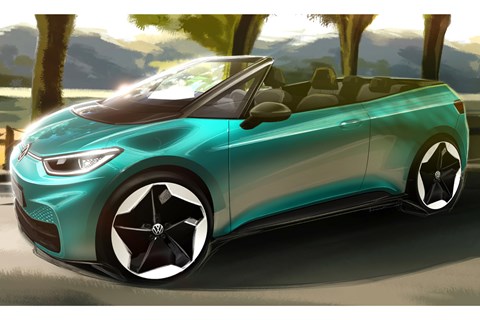
On top of that, VW has dreamt up an ID.3 convertible. While just a flight of fancy for now, Brandstätter and CEO Herbert Diess have both expressed their interest in developing one.
Read our review of the VW ID.3 review here
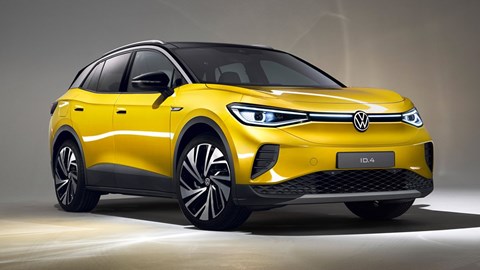
The second model in Volkswagen’s ID range of electric cars, the 4 is a crossover SUV based on the firm’s electric MEB platform.
The ID.4 takes inspiration from the ID Crozz concept from a couple of years ago, so we can expect a choice of batteries delivering range of up to around 311 miles on a charge, with the ability to charge from empty to 80% capacity in around 30 minutes via a rapid charger. It’s also expected a top-spec model with the most powerful battery pack could deliver up to 301bhp. This will also be the first model to have a new GTX performance variant.
Read our VW ID.4 review here
VW ID. 5
Another model inspired by the ID Crozz concept. The ID.5 is essentially a coupe-SUV version of the ID.4, with a shallower and sleeker silhouette while still offering the ID.4's practicality inside.
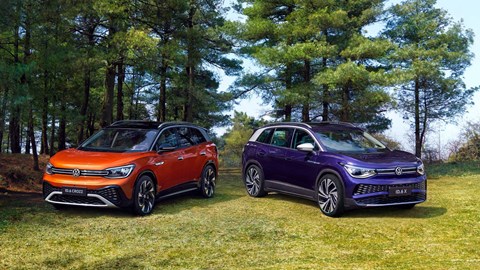
The new ID.6 a is purely aimed at the Chinese market – so much so, that it won’t be on sale anywhere else. As you can probably tell from the name, the ID.6 will slot above the hatchback-sized ID.3 and the more crossover sized ID.4. It'll seat seven.
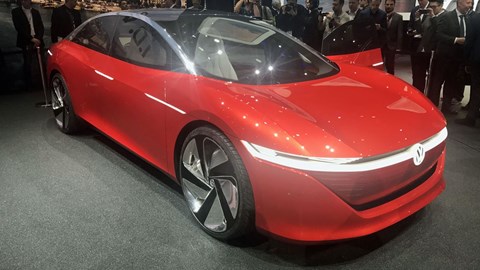
The 2018 Geneva motor show brought a fourth concept example, the super-sleek VW ID Vizzion.
The ID Vizzion follows the original the ID hatch (which became the ID.3), the ID Crozz coupe-SUV and the ID Buzz van/MPV, and immediately establishes itself as a strong contender for the ID with the daftest name.
In terms of looks, the Vizzion is perhaps the least outlandish ID model yet – but with absolutely no hint of a steering wheel or pedals inside and lots of talk of artificial intelligence-led autonomous driving, it totally gets its futuristic mojo back when it comes to technology.
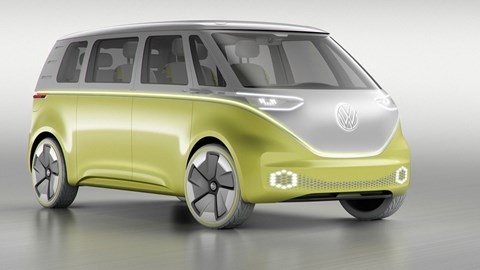
Volkswagen has committed to bringing its Microbus minivan back from the dead – as a heavily stylised, all-electric fashion wagon.
It's due in showrooms in 2022 and will be based heavily on the ID Buzz concept car.
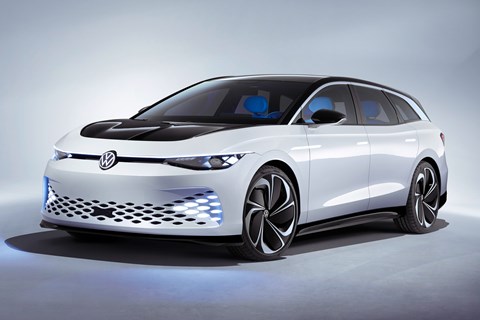
Codenamed Aero 2, the production version of the ID Space Vizzion – an all-electric estate – will arrive in 2023.
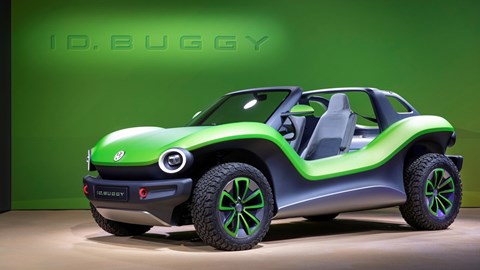
After the ID range of cars reaches full fruition (meaning everything from ID.1 to ID.7), Volkswagen is considering adding more niche EVs to its range to inject a bit of fun into the mix. Volkswagen brought out a concept to resurrect the buggy as an electric ID model, with CEO Herbert Diess saying at the 2019 Geneva motor show that it was considering launching it by collaborating with third parties to make such niche cars viable. However, CAR insiders say the project has been canned, after a deal with Aachen-based e:Go Mobility fell through due to e:Go filing for insolvency.
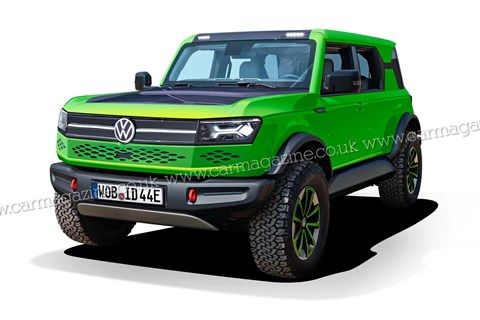
Instead of the ID Buggy, VW is considering launching a tough, small 4x4 codenamed Ruggedzz in 2025. Designed to be a rufty-tufty off-roader with e-power, the Ruggedzz will be cheap to build, easy to clean, flexible and affordable to run – aimed at the young outdoors and lifestyle crowd. This project, however, could be handed over to Skoda.
What is Project Trinity?
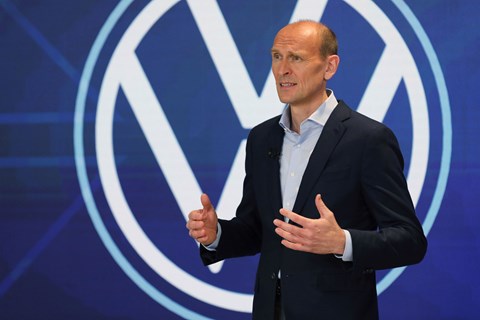
The next step of the electric onslaught. While the ID range is the start, VW says Trinity will be all of the elements it's developed in the first range of cars boiled down into one entity, arriving in 2026. It's linked to Audi's Project Artemis but, while Audi's project is more for developing electric luxury cars for itself, Porsche and Bentley, VW is focusing on the accessible end of the market. 'This technology must not become the preserve of a select elite, which is why we are scaling it to make it available for many people,' VW's Ralf Brandstätter said during the 2021 annual conference.
Tangible details and imagery are scarce, but VW says Trinity will offer Level 2+ autonomous driving from launch (already the market standard, really), with the technology in-built to upgrade that to Level 4. On top of that, Trinity will be the framework for driving forward Car-to-X technology, allowing all of the brand's cars on the road to talk to each other – that detail could make a huge difference to Level 4 autonomy being safe and successful.
Electric Volkswagens: the new ID EV tech explained
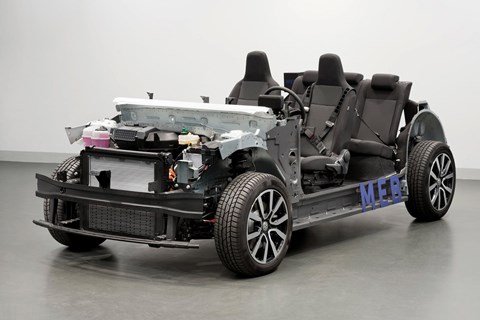
With an anticipated 10 million vehicle sales across all VW Group brands during the first wave of electrification (and up to 22m by the end of the 2020s), there’s been considerable focus on component sharing and cost cutting. The use of an all-steel platform will help; it’s far cheaper than a lightweight aluminium alternative.
But the big cost challenge will be in the less familiar area of battery costs. As VW makes the transition from internal combustion to electrification, it needs to not only master the use of batteries but secure a reliable, cost-effective supply of the raw materials, while being on the lookout for technical advances.
CAR lives with a VW Golf GTE plug-in hybrid

VW's Christian Senger told CAR: ‘Today 40% of an EV’s cost is the battery, and while the cost of components like electric motors and power electronics has halved we won’t achieve cost parity until 2025, not before. We have to reduce battery costs but in the meantime reducing complexity by simplifying the architecture is a move in the right direction.’
Like the MEB, the battery pack is modular. According to the new WLTP assessment, the entry-level battery will offer 200 miles of range. The next step up is around 270 miles.
A third, yet to be confirmed, is expected to hold enough charge to offer a 340-mile range.
The lithium-ion batteries (above) are still undergoing development, according to Dr Armin Modlinger, responsible for developing cell technology for all the VW brands; he’s based at the pilot line for battery cell production in Salzgitter. VW is using both prismatic and pouch cells for the most efficient packaging and easier handling. ‘We need to increase the energy density to improve range by adding more nickel to the cathode and silicon to the anode,’ he said.
Crucially, because the ID range will be built on a global scale, including the USA and China, the batteries are ‘cell agnostic’ – able to accommodate locally produced cells.
According to Modlinger, solid-state batteries – with their improved safety and higher energy density – are not likely to appear until the end of the 2020s.
ID is not just about electrification. They are the first VWs to be permanently connected to the cloud via 4G, and are being future-proofed for 5G. VW has developed a completely new end-to-end electronics architecture, branded E3, together with the new vw.OS operating system allowing the car’s software to be remotely updated.
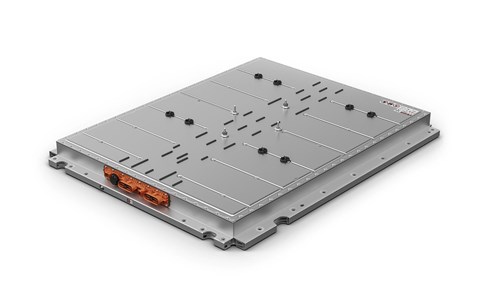
A trio of separate application servers control various functions on the car: an infotainment server for third-party apps; an autonomous driving server; and a third server that is only accessible via VW’s digital platform.
How will you charge the ID range?
VW is part of the Ionity partnership with Daimler, BMW and Ford, which plans to open hundreds of charging sites with an average of six charge points per site across Europe; as demand and technology evolve, these will be able to charge at up to 350kW and 920 volts.
Senger dismissed concerns about battery recycling and the prospect of a dead li-ion battery mountain, revealing that VW is working with both universities and industry to develop recycling processes that will recover 97% of the batteries’ chemicals, although that is unlikely to emerge before 2025 when there are sufficient EVs on the road to make it financially viable.
‘Before then we could just replace any cells that fail and rebalance the battery or remove the battery and use it for stationary storage – there will be a huge market for this as the pricing is higher than in the automotive value chain.’
Credit where it’s due: hasn’t VW been forced into this by Elon Musk and Tesla?’ Senger says: ‘Tesla proved that people like EVs and that it’s not just about being CO2 compliant. If Model 3 had been on time – yes, that would have been a serious threat.’
Further electric car reading
The best electric cars and EVs on sale today
How much does it cost to charge an electric car?
The best hybrids, plug-ins and PHEVs
Wireless electric car charging